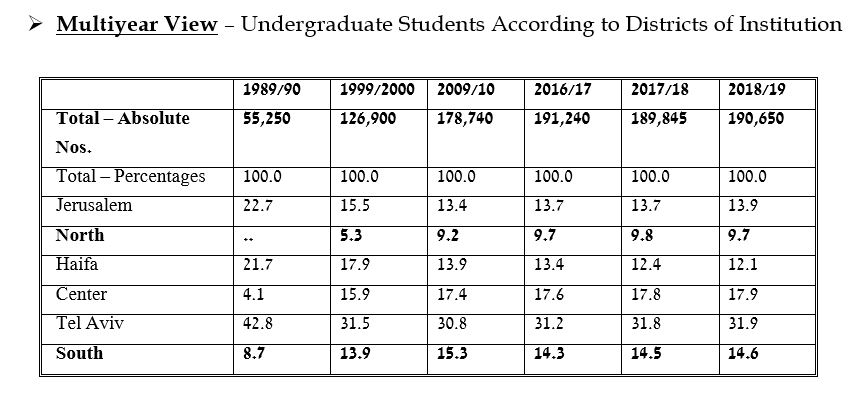Making Higher Education More Accessible to the Socioeconomic Periphery: Over Four Years, There Has Been an Increase of More Than 8,000 Students Coming from Towns Located in Low Socioeconomic Clusters (Clusters 1-4)
- In the 2018/19 academic year, more than 50,000 students came from towns located in low socioeconomic clusters (including Arab and ultra-Orthodox Jewish towns)
The sharp increase in the number of students in the last several decades is primarily expressed in significant achievements in expanding accessibility to higher education among the population living in the periphery and among weak population groups. The special data processing, performed for us by the Central Bureau for Statistics, examines the socioeconomic cluster of the town where the student resides at the time he or she was enrolled in the 12th grade.
From this data, we see that between 2015-2019, there has been an increase of more than 8,000 students coming from low socioeconomic clusters 1-4 (comprising Arab and ultra-Orthodox towns), such that in the 2018/19 academic year, more than 5,000 students, representing approximately 30% of all undergraduate students, came from towns located in these clusters.
According to the 2018/19 data, 14,158 students came from towns located in social clusters 1-2 as opposed to just 10,335 students in the 2015/16 academic year. Additionally, in 2018/19, 36,383 students came from towns located in social clusters 3-4 as opposed to just 32,670 students in the 2015/16 academic year.
- Development of the Colleges Has Led to an Increase in the Number of Students in Academic Institutions in the Southern and Northern DistrictsIn the 2018/19 academic year, approximately 24% of undergraduate students were enrolled in institutions located in the northern and southern districts (9.7% in the northern district and 14.6% in the southern district). The number of those studying in the northern district increased nearly threefold in comparison to the 1999/2000 academic year, primarily as a result of the expansion of existing programs in the academic colleges in the north and the opening of new curricula. This significant change on the map of higher education in Israel, which occurred in the last two decades, would not have been possible but for the allocation of the significant, necessary budgetary resources to the two socioeconomic periphery districts.




